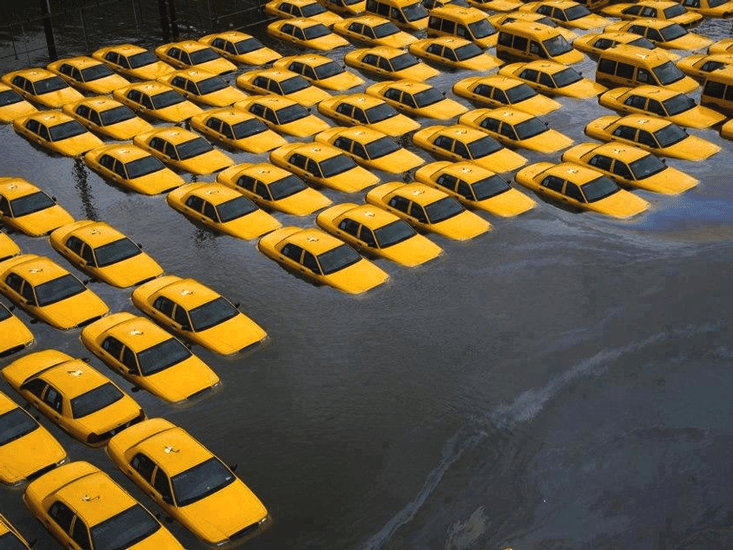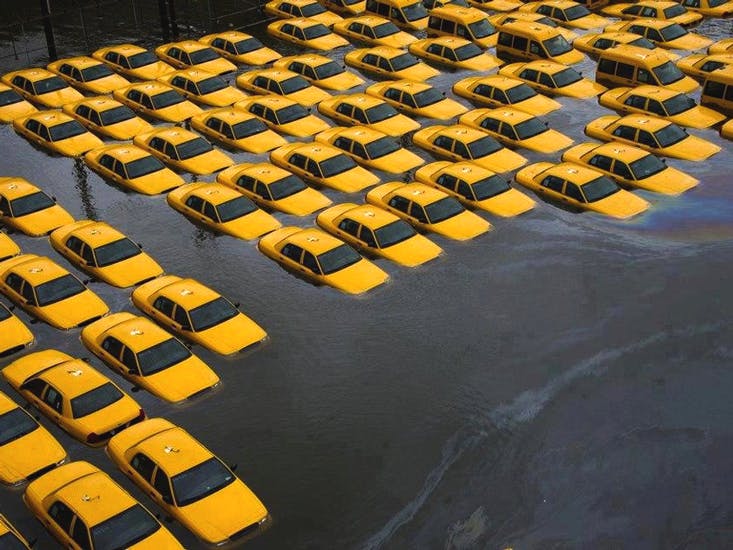When Hurricane Sandy destroyed much of the New York and New Jersey coastlines, in October 2012, the looming threat of climate change abruptly became personal for a large portion of the East Coast—specifically Miranda Massie, a former public-interest lawyer. Seeing her city wasted, she realized that there was nowhere for the public to assemble and discuss what their future on a warming planet might look like.

So, she started the Climate Museum Launch Project, with the goal of building an education hub to, as its website states, “move climate awareness to the center of public life.” If the Climate Museum Launch Project secures funding, New York City would become home to the world’s largest, most ambitious climate-change museum. And it would be the first in the US dedicated to tackling a challenge all science museums face: how to represent changing and politicized science.
But how does a museum, something that by its very nature enshrines ideas of the past and present, become a forum for talking about the future?
That science museums could be effective at promoting conversations about climate isn’t just a groundless hope. According to a 2010 survey by the Yale Project on Climate Change Communication, 73 percent of science-museum visitors said they would like to learn more about climate change, and that they trusted museums and other non-academic science institutions more than other sources of information. The same survey found that, while Americans lack a broad understanding of climate change, museum visitors were generally better informed about it than non-visitors.
But Massie and her collaborators will still have to avoid the pitfalls that have drawn criticism to earlier, similar efforts. The American Museum of Natural History’s 2008 show, “Climate Change,” was criticized for being too apocalyptic and fear mongering. The following year, the London Science Museum’s show, “Prove It!” was panned for being patronizing and eschewing actual science.
Nina Arens, a biologist, science curator and founder of a traveling science museum called Pop-Up Science, says a successful climate museum must avoid certain strategies that date back to the antiquated days of science museums’ origins—treating science as static, universally positive, and disconnected from morals and society. As part of her master’s dissertation, Arens argues that they focused on “science they can reliably count on not to change at all, things like anatomy, physics,” which tends to emphasize outcome over processes.
Science and technology museums have also traditionally promoted industry. The World Fairs of the Industrial Era attracted millions to exhibits on science, technology, architecture and anthropology. But they also ushered in an era in which science was treated as entertainment, and visitors were treated as consumers. This only intensified after World War II, with specific exhibits bankrolled by corporate interests.
Today, people are a bit more suspicious of corporate-sponsored science exhibits, and for good reason. In June, the Guardian revealed that one of the sponsors of the London Science Museum’s Climate Science gallery, the oil-company Shell, sought to influence content.
Inducing people to worry about climate change—as opposed to fearing it—isn’t a turn off
Massie’s Climate Museum will have to find ways to buck compromising sponsorships and earn the trust of its visitors. Arens points to the Science Gallery in Dublin as one successful example. The Science Gallery keeps no permanent collection, integrates art and conceptual design, strives to engage museum-goers in conversations about current science, and doesn’t count any fossil-fuel companies among its list of supporters.
The Science Gallery’s 2014 exhibit, “Strange Weather,” was more akin to an art museum than a science museum. It included renderings of plants modified to survive in extreme weather conditions and a short film about the increasingly urgent means governments are taking to control out-of-control weather patterns.
The museum will also have to negotiate controversy and negativity. “[Climate change] is just about the most politically controversial topic that we can take on right now,” Paul Martin, senior vice president for science learning at the Science Museum of Minnesota, told The Dallas Morning News. But the problem isn’t just political, but emotional, too. In a series of interviews with museum officials across the country, the paper found that those in charge of developing exhibits worried that displays about climate change would alienate visitors and cause them to reject the museums’ lessons wholesale.
Particularly at science centers, which tend to feature interactive, family-friendly exhibits, officials were concerned that the subject of climate change is a downer and may not square with the enjoyable museum experience people expect.
Research suggests that public engagement decreases when people see frightening or anxiety-provoking imagery. They intentionally withdraw—distancing themselves emotionally—when the threat is so large that individual efforts feel useless. But inducing people to worry about climate change—as opposed to fearing it—isn’t a turn off, the researchers found. “You have to make it clear that you’re part of a broader set of efforts and those broader efforts can succeed,” as Massie told The New York Times. Given the Climate Museum’s specific focus, at least its visitors will know what they’re walking into and will be choosing to be part of the conversation.
Arens says that these narrative and interactive techniques give visitors “a glimpse into what their future may be like, and demand that they reflect personally.” They also allow the museum to avoid some of the politics associated with climate change, while promoting the creativity that an unknown future demands.
The dynamic displays make a lot of sense for a climate museum and appeal to Massie, too. The science, technology, and politics of climate change are “always changing radically,” she tells The New Yorker, and a responsive environment reflects that. Unlike other institutions, with their permanent and predictable exhibits, the whole point of the Climate Change museum would be to create a conversation around transformation and unpredictability—and with each new exhibit, a reminder that the planet is changing, too.
Jen Kinney writes about infrastructure, housing, and other urban innovations for Next City.



